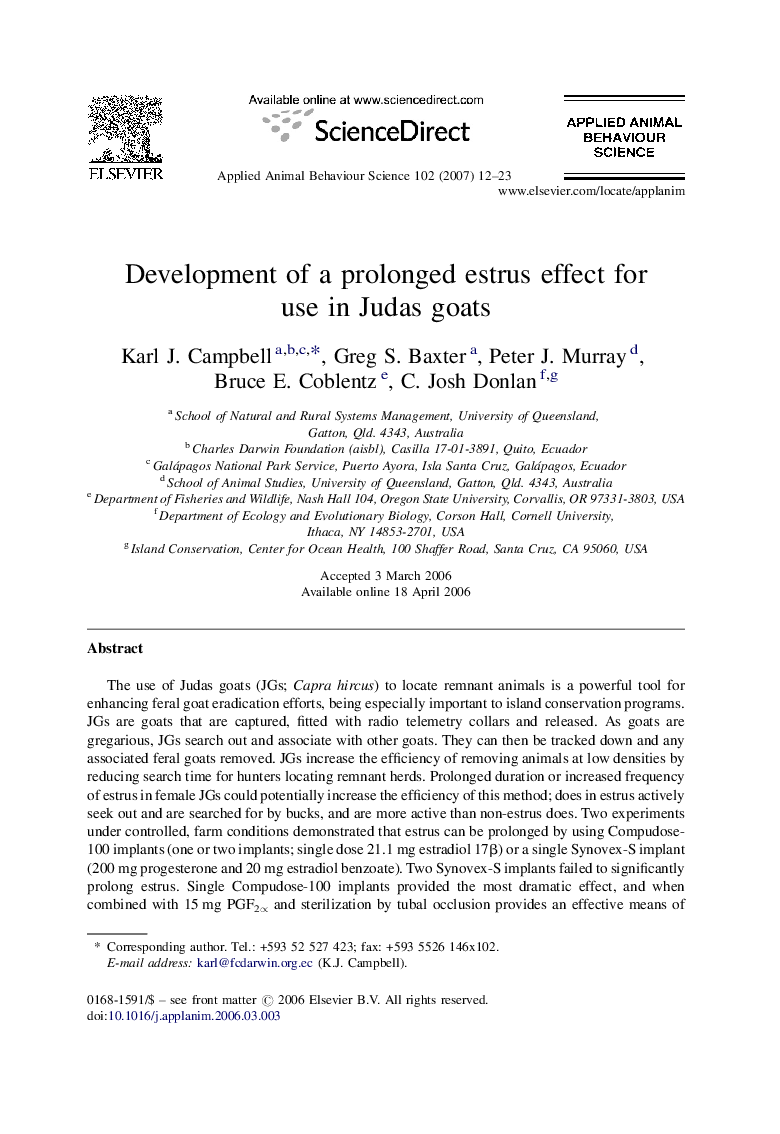| Article ID | Journal | Published Year | Pages | File Type |
|---|---|---|---|---|
| 6379847 | Applied Animal Behaviour Science | 2007 | 12 Pages |
Abstract
The use of Judas goats (JGs; Capra hircus) to locate remnant animals is a powerful tool for enhancing feral goat eradication efforts, being especially important to island conservation programs. JGs are goats that are captured, fitted with radio telemetry collars and released. As goats are gregarious, JGs search out and associate with other goats. They can then be tracked down and any associated feral goats removed. JGs increase the efficiency of removing animals at low densities by reducing search time for hunters locating remnant herds. Prolonged duration or increased frequency of estrus in female JGs could potentially increase the efficiency of this method; does in estrus actively seek out and are searched for by bucks, and are more active than non-estrus does. Two experiments under controlled, farm conditions demonstrated that estrus can be prolonged by using Compudose-100 implants (one or two implants; single dose 21.1 mg estradiol 17β) or a single Synovex-S implant (200 mg progesterone and 20 mg estradiol benzoate). Two Synovex-S implants failed to significantly prolong estrus. Single Compudose-100 implants provided the most dramatic effect, and when combined with 15 mg PGF2â and sterilization by tubal occlusion provides an effective means of terminating pregnancy, inducing sterility and prolonging estrus 6-16-fold compared to sterile does and at least 82-fold compared to unaltered does, with a single intervention. Incorporating these methods into Judas goat programs will likely increase the efficiency and capability of feral goat control and island conservation.
Related Topics
Life Sciences
Agricultural and Biological Sciences
Animal Science and Zoology
Authors
Karl J. Campbell, Greg S. Baxter, Peter J. Murray, Bruce E. Coblentz, C. Josh Donlan,
